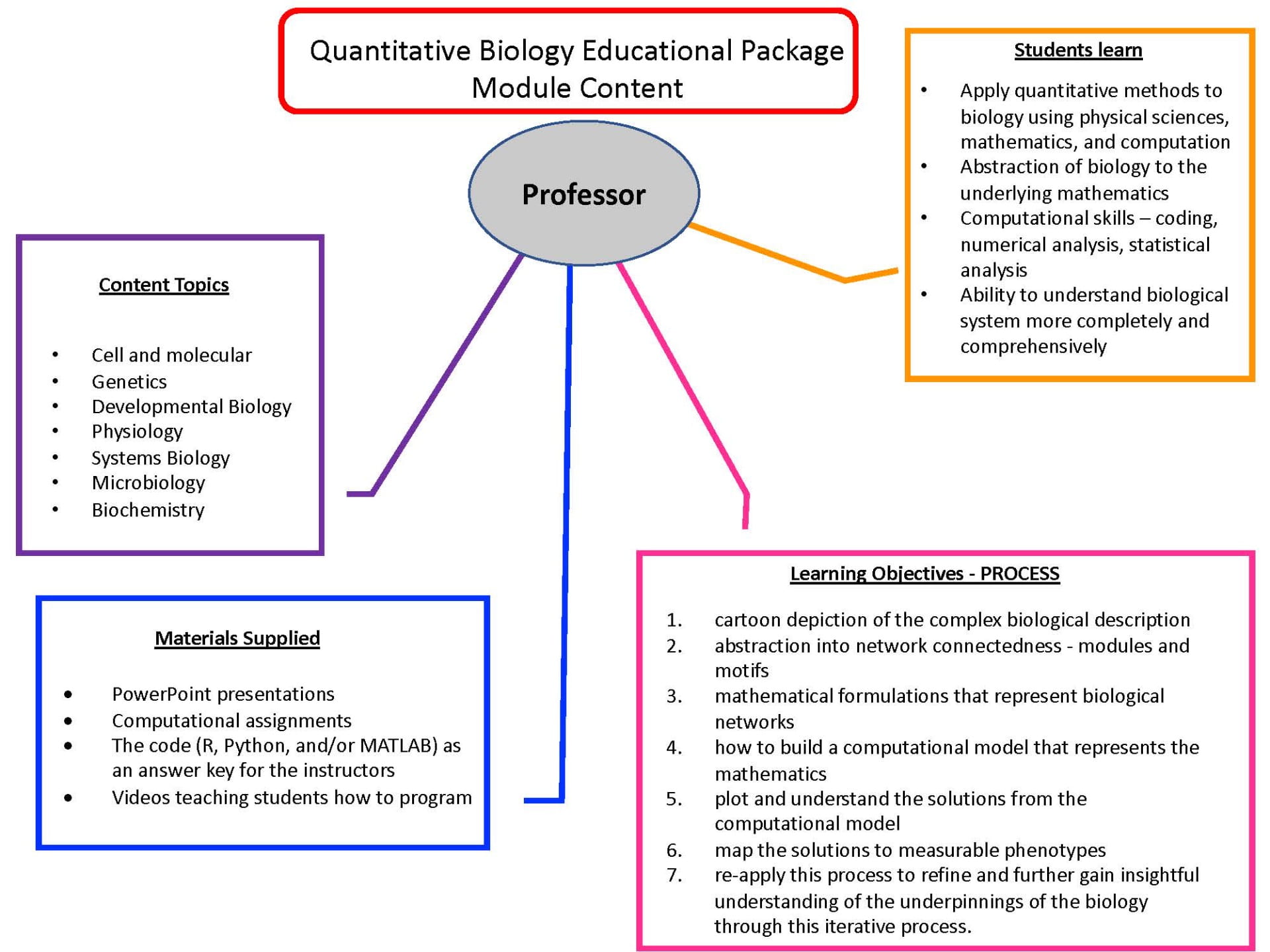Undergraduate biology education is lacking in the fundamental skills and knowledge of mathematics, computation, physics, and chemistry in understanding the underpinnings of how and why complicated biological processes occur. Physical laws govern how these processes work and curriculum needs to be created that teaches the undergraduate population how to utilize the skills of applying mathematics to complicated biological processes. This application will enable students to have a better and more fundamental understanding of biology and how it behaves (Figure 1).
I have created biological “modules” that can be inserted into any of the fundamental biology classes i.e. cell and molecular biology, genetics, developmental biology, physiology, microbiology, biochemistry, and systems biology classes. This enables professors to pick and choose a module and insert it into their existing curriculum. Thereby, teaching their students how to apply this “new” skill set to complicated biological processes. For example, a professor teaching a cell and molecular biology class can take the microtubule dynamic instability module and teach their students how to visualize stochasticity in biological processes through modeling kinetochore microtubules in the process of constructing the spindle apparatus during mitosis (Figure 1).
Once we have a preliminary understanding of the complex biology, how can we gain further insight into the fundamental underpinnings that “drive” the biology we see? These modules allows one to explore the process to use a quantitative representation of the underlying biological reactions that explain the “why” and the “how” biology occurs. The process outlines and describes how to produce and move from 1) cartoon depiction of the complex biological description, 2) abstraction into network connectedness – modules and motifs, 3) mathematical formulations that represent biological networks, 4) how to build a computational model that represents the mathematics, 5) plot and understand the solutions from the computational model, 6) map the solutions to measurable phenotypes, and 7) re-apply this process to refine and further gain insightful understanding of the underpinnings of the biology through this iterative process.
When looking at a system of interconnecting reactions in a sea of thousands of reactions, one can identify connectivity patterns that occur significantly more often in real than in random networks. One cannot keep all this information in your head. Therefore, we need to construct a mathematical model of all the nonlinear reactions and measure and test what happens upon perturbation of the system. This gives exceptional insight into how biology exploits the nonlinearity and how life lives.
 Figure 1: Concept map of materials, learning objectives, and topics supplied in the Quantitative Biology Educational Package
Figure 1: Concept map of materials, learning objectives, and topics supplied in the Quantitative Biology Educational Package